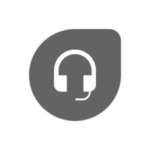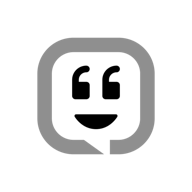articles / June 16, 2020
What is the Best Work From
Home Routine?
On the surface, it’s easy to see how working from home is different from an office setting.
First, there are the perks. No commute time allows for extra sleep, or a fulfilling breakfast with coffee. Shower-access enables midday workouts, which in turn extends personal time at the end of the workday. It’s comfortable — working from the couch, a kitchen table, even a porch or fire escape.
These are real advantages of remote work, and many virtual employees are able to utilize them in order to create an enjoyable and productive working life.
However, for every action, there is a reaction. Every yin has a yang. What at first may seem like endless benefits of remote work could prove to be the calm before the storm. (And this will be the last cliché used for a while, I promise.)
Subconsciously, your remote work routine might be sabotaging creativity, productivity, and overall mental wellbeing. That is to say, commuting, office work environments, communal lunch hours, and a designated work space all provide inherent benefits that help employees work more efficiently and happily.
While the comforts of home can absolutely contribute to a better working-life, many work from home employees fail to recreate enough elements of an office environment to produce long term positive results.
Especially since many teams are making the switch to virtual offices, it’s important to examine what makes for a good work from home routine, and how to balance nearly limitless freedom of movement with optimal productivity.Ready to build better conversations?Simple to set up. Easy to use. Powerful integrations.
The basics of your work from home routine
There’s no magic formula, and we’re not pretending there is. In terms of what you should do to maintain a good balance of productivity and happiness when working from home, everybody is different.
Finding the right solution for you will take a little bit of introspection, not to mention trial and error. However, there are three main principles of creating a sustainable and productive work from home routine that expert and amateur productivity researchers alike will agree on.
Stay on schedule
People are creatures of habit. Whether we admit it or not, there’s something about a routine that allows us to enter the “right” mindset for a given situation. An athlete might eat the same meal before every competition, and an actor might use a tried-and-true vocal warm up routine pre-performance.
The same is true for your workday. One of the first mistakes remote employees make is to treat working from home the same as a “working holiday.” When you wake up at different times each morning, exercise sporadically, and don’t have a defined schedule for breaks, your mind won’t learn when it’s time to buckle-down — not the same way it would if you had arrived to an office, gotten your caffeine fix per-usual, and sat down at your workstation.
This isn’t to say you must repeat each workday as if you’re Bill Murray (no citation needed), but there should be a generally outlined routine.
Minimally, you should wake up, begin work, and end your day according to a predetermined schedule. In addition to blocking time to cover the basics — emails, long-term projects, smaller assignments — it helps to outline workouts, breaks, and meals throughout the workweek.
Again, this type of time management won’t work in exactly the same way for everyone, but anecdotally, some of the most successful people in business have well-defined routines .
Make breaks official
When you’re in the zone, stay there. The concept of flow has been around for a while, but getting to that point isn’t always easy.
Back in the day, common knowledge was that productivity was a result of heightened focus, fewer distractions, and “grinding it out.” While this is still true in some regard, workplace psychology has had renaissance. It’s now agreed upon that regular breaks can help in-office and remote workers improve efficiency.
Furthermore, small tasks may require an extra “push,” but taking a break can actually help restore motivation for long-term projects as well.
In order to optimize your work-break potential, keep two things in mind
- First, schedule breaks into your daily routine. These can take the form of a 20- minute walk, an actual lunch break, a phone call with family/friends, or a midday trip to the gym (depending on proximity).
- Second, if you’re in a state of flow and making great progress on your tasks and/or projects, don’t stop, even if you’re approaching a designated break period. These times of increased focus are what you should be aiming for each day, and cutting them short defeats the purpose of seeking them in the first place.
Pro tip: micro-breaking the hours of your workday is a great way to measure productivity and progress in between longer periods of “rest.” In many workplaces and home-offices, the pomodoro technique has grown in popularity. Essentially, this is 25 minute periods of intense, “heads down” work followed by 5 minute breaks. Repeat three times for a full “set,” and consider using a free meditation app, like Calmto really take advantage of those mini-breaks.
Remember to include face-time (virtually or in-person)
Zoom calls and Slack conversations are everywhere in virtual office setups. However, these virtual communication tools can only go so far in replicating the social interactions people want, and need, to feel part of a community.
Remote workers should make special effort to have both mundane and meaningful interactions with others on a daily basis. This can take the form of a lunch hour with friends, or even working a half-day at a local coffee shop or library.
If these measures can’t be reasonably achieved in-person, a phone call with relatives or friends during a midday walk or after dinner can serve as a substitute.
Again, these recommendations will vary from person-to-person. Remote employees who work in sales or support roles may find what they need at the end of the day is to decompress and reflect in solitude.
Work From Home Routine: An Inside Look
Of course, in reality, these remote work best practices are going to look different — that is to say, a little bit messier.
Like many companies, Voipy has recently transitioned to a fully virtual office setup. We’re in a fortunate position, being that all our technologies are cloud-based, and nearly all roles can function (mostly) as usual from anywhere with an internet connection.
But to really see how Voipy has made the switch to remote — and to learn what aspects of our employees’ work from home routines are most effective — We asked Megan, an account executive on the sales team, and Jordan from the customer support team, how their work from home transitions were going.
These were some of their responses.
How do you typically start your day? Do you ease into work or just hop right in?
Megan: On the sales team, we have a standing 9 am meeting every day. Before that, I try to leave myself enough time to make some kind of luxury coffee drink. Something about starting the workday with a nice drink I’ve made myself feels right. I have a fancy espresso machine, so it’s usually espresso over ice now that it’s getting warm outside. I like to make matcha as well, but it’s too time consuming for most days.
Jordan: It’s pretty different for me, starting the day working from home versus going into the office. Personally, I don’t ease into it, but I see this as somewhat of a positive thing. I don’t need to choose something nice to wear, I don’t have to worry about leaving on time or checking trains. I get up a little early, just to prepare myself, but a lot of the small morning stressors are removed.
Coffee is essential though. I need to make sure I have enough coffee to start the day. I also try to make myself eggs or some kind of breakfast.
Do you keep typical working hours?
Jordan: Yeah, in support, we keep pretty standard hours. We work in shifts, 9 hours with an hour lunch break, so those haven’t changed much since we’ve gone remote. There was a support associate in our Paris office who’s gone home to New Zealand, so some of our later-shifts have been covered.
Megan: In the beginning, it was difficult to separate work from free time. Not physically leaving the office means there’s less of a noticeable divide. First couple weeks I was working 9 am to 8 pm, but it sunk in that we’re gonna be here for a while. It wasn’t a good long term solution, and now I try to turn off at 6:30. I do think people tend to work more hours in the work from home setup.
What’s your WFH setup like?
Megan: I live in Hoboken, so I probably have more room than most New Yorkers. I have a desk with a second monitor set up for when I’m doing demos, but most admin work is done in the armchair.
Jordan: In the office, I had a second monitor, but now I only have the single screen. I do still use a mouse, but unfortunately I don’t have a desk or anything. The reality of living in a pretty small apartment and having a roommate who also works remote is there’s a lack of space. Honestly, I spend a lot of time working from bed, and it’s turned out surprisingly well. A desk and second monitor might be nice, but at my apartment it’s easy to get comfortable. As long as you can get in the zone, nothing much changes.
Also, I was worried at first about relying on the home wifi. But it hasn’t been an issue so far.
Do you take breaks throughout the day?
Megan: I’ve been trying to block off an hour for lunch each day. I also take walks, find outdoor time. Plus a quick 30 minute break later in the day. This isn’t something I do in the office normally. But I’m also a huge list-person. I make sure to write down “take break” as one of my things to-do.
Jordan: I take my lunch around the same time every day, around 2 or 3 PM, usually 2-3. I have that structure to break up the day pretty much halfway.
A challenge at first, but something that’s become easier, is realizing how I don’t need to skip the small breaks that I normally would’ve taken in the office. Bathroom, water, snacks… a moment to yourself to step away and refocus.
What tools do you rely on to stay productive?
Megan: I just need to set reminders. In the office, I use physical sticky-notes to organize my tasks and thoughts. Throwing away sticky notes is cathartic, but now that I use the stickies on my Macbook it’s a deleting process. Google calendar is also essential for keeping track of tasks for that day, dragging and dropping between days is also super easy.
Jordan: In support, availability is productivity. I sign into slack, the Voipy app, and Intercom first thing every day. Basically opening all the communication tools we use. I don’t fundamentally use the tools differently in a home environment. The more communication channels I have open, the more productive I become. This includes communication with managers and team members, as well as customers through chat, phone, etc.
Both home and in-office are double edged swords for productivity. In many ways, working from home is more productive. You may have less accountability from people in the room, but there are also fewer distractions. At home, you might lose productivity because you turned on the TV, but you also have the power to turn it off just as easily. In the office, you can’t stop coworkers from coming up and talking to you.
How does Voipy help you work remote?
Jordan: Just being able to take calls in this environment. There are a lot of people who have been moving remote, transitioning their setups to a virtual environment, and they’ve been really happy that we’re there to help them every step of the way.
From a meta-level, none of our support would be there for them if Voipy wasn’t built the way it was — to enable this type of flexible setup, location-wise. Mobile phones wouldn’t be a good solution for a support team using a centralized line. Email and chat, you can log into individually from anywhere, but without the cloud-based solution, we wouldn’t be able to keep up.
Megan: We’ve been using Voipy more because it’s easier to get in touch with people on the phone lately. Email is so inundated and very high stress. It’s easier to jump on a call. You can learn more in a short phone call than you can jumping back and forth over seven emails.
We’re also doubling-down with our check in process. A phone call is useful because you can understand more from voice, listen to tonality for extra clues.
What’s your top tip for sales/support reps to focus?
Megan: Specifically for remote sales reps right now, the best thing to remember is empathy. You don’t know what’s going on with prospects. These are difficult times, they might be fighting to keep their business alive. Push your solution if it will genuinely support them, but remember everything that’s going on, contextually.
Also, blocking time off to do things. If you’re productive and get things done, take a walk, reward yourself.
Jordan: Try to focus on what your job is, rather than the circumstances you’re in — basically where you’re working from. I was thinking how everything was going to be tough at first, but then I switched to focusing on the people reaching out, “here’s what they need,” and the job really doesn’t change that much from the office setting.
Megan: Specifically for remote sales reps right now, the best thing to remember is empathy. You don’t know what’s going on with prospects. These are difficult times, they might be fighting to keep their business alive. Push your solution if it will genuinely support them, but remember everything that’s going on, contextually.
What’s the most unique part of your WFH life?
Jordan: I assume everybody is working from bed as well, so I’ll try to choose something more unique and get back to you.
Megan: This is tough. It’s really the simple things that are different. Ways to entertain yourself.
I bought 50 ping pong balls and released them in the apartment all at once to confuse, scare, or entertain my cat. Now I own a lot of ping pong balls and throw them around when things get heavy.
-
 The Salon Harlow team absolutely love our new Voipy phone system, we got rid of our "traditional" desk phones that took up room and cost me a fortune & now all my staff have the app on their mobile phone. Voipy has saved me money and made the business more efficient as we do not miss calls anymore.Ashe Salon Owner, Salon Harlow
The Salon Harlow team absolutely love our new Voipy phone system, we got rid of our "traditional" desk phones that took up room and cost me a fortune & now all my staff have the app on their mobile phone. Voipy has saved me money and made the business more efficient as we do not miss calls anymore.Ashe Salon Owner, Salon Harlow -
 We rely on Voipy for our day to day operation and customer service lines. The team are extremely knowledgable and the business has saved a lot of money.Andy Director, SiteFinder
We rely on Voipy for our day to day operation and customer service lines. The team are extremely knowledgable and the business has saved a lot of money.Andy Director, SiteFinder -
 I could not recommend any more highly, the professional and efficient way that Dean & Michael manage our account. Their efficiency in resolving any issues for us is outstanding in every aspect of our needs. Their service is also not limited simply to Monday-Friday business hours, with our often need for resolution to Data add-on's taking place over the weekend for international travel within our company.Tina CFO, Austral Air Conditioning Services
I could not recommend any more highly, the professional and efficient way that Dean & Michael manage our account. Their efficiency in resolving any issues for us is outstanding in every aspect of our needs. Their service is also not limited simply to Monday-Friday business hours, with our often need for resolution to Data add-on's taking place over the weekend for international travel within our company.Tina CFO, Austral Air Conditioning Services -
 Where to start ... shopped around, got promised the world and let down time and time again, until we spoke with Mick from Voipy, they were Located in Australia had access to apps with great integrations both domestic and from around the world, they helped us get set up and trained the team. Voipy has great knowledge of their industry and we can't recommend it highly enough, plus they also got us a great deal on our Internet and MobilesJames Operations Director, Collective Weight Loss
Where to start ... shopped around, got promised the world and let down time and time again, until we spoke with Mick from Voipy, they were Located in Australia had access to apps with great integrations both domestic and from around the world, they helped us get set up and trained the team. Voipy has great knowledge of their industry and we can't recommend it highly enough, plus they also got us a great deal on our Internet and MobilesJames Operations Director, Collective Weight Loss


Customer love
Our customers have spoken
Whether your business is Upsizing or downsizing, on the move to a new space or modernising the one your in, Voipy has your back. Market-leading, flexible products, fast & seamless setup, affordable pricing, local and responsive support.




Customer love
Our customers have spoken
Whether your business is Upsizing or downsizing, on the move to a new space or modernising the one your in, Voipy has your back. Market-leading, flexible products, fast & seamless setup, affordable pricing, local and responsive support.
OUR PARTNERS
Some of our trusted partners
Our partners trust us to deliver the very best Web, Security, Data and Mobile tools for Businesses to
communicate with their customers and stay secure.
Become a Voipy Partner
Voipy connects to the tools you love



















Where to start ... shopped around, got promised the world and let down time and time again, until we spoke with Mick from Voipy, they were Located in Australia had access to apps with great integrations both domestic and from around the world, they helped us get set up and trained the team. Voipy has great knowledge of their industry and we can't recommend it highly enough, plus they also got us a great deal on our Internet and Mobiles
James
Operations Director, Collective Weight Loss

The Salon Harlow team absolutely love our new Voipy phone system, we got rid of our "traditional" desk phones that took up room and cost me a fortune & now all my staff have the app on their mobile phone. Voipy has saved me money and made the business more efficient as we do not miss calls anymore.
Ashe
Salon Owner, Salon Harlow

We rely on Voipy for our day to day operation and customer service lines. The team are extremely knowledgable and the business has saved a lot of money.
Andy
Director, SiteFinder

I could not recommend any more highly, the professional and efficient way that Dean & Michael manage our account. Their efficiency in resolving any issues for us is outstanding in every aspect of our needs. Their service is also not limited simply to Monday-Friday business hours, with our often need for resolution to Data add-on's taking place over the weekend for international travel within our company.
Tina
CFO, Austral Air Conditioning Services

Where to start ... shopped around, got promised the world and let down time and time again, until we spoke with Mick from Voipy, they were Located in Australia had access to apps with great integrations both domestic and from around the world, they helped us get set up and trained the team. Voipy has great knowledge of their industry and we can't recommend it highly enough, plus they also got us a great deal on our Internet and Mobiles
James
Operations Director, Collective Weight Loss

The Salon Harlow team absolutely love our new Voipy phone system, we got rid of our "traditional" desk phones that took up room and cost me a fortune & now all my staff have the app on their mobile phone. Voipy has saved me money and made the business more efficient as we do not miss calls anymore.




